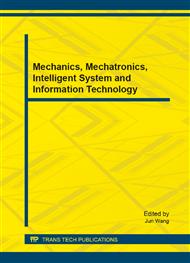[1]
Z. Yongkang, Laser processing technology, Chemical Industry Press, Beijing, 2004, pp.259-260.
Google Scholar
[2]
H. Binjie, W. Gang, and L. Laisheng, Smm analysis of reflection, absorption, and transmission from nonuniform magnetized plasma slab, Transactions on plasma science, vol. 27, 1999, pp.1131-1136.
DOI: 10.1109/27.782293
Google Scholar
[3]
L. Berthe, R. Fabbro, and P. Peyre, Shock wave from a water-confined laser-generated plasma, Jornal of Applied Physics, vol. 82, 1997, pp.2826-2832.
DOI: 10.1063/1.366113
Google Scholar
[4]
N. Joachim, and V. Alfred, Single-shot spatially sesolved characterization of laser-induced shock waves in water, Applied Optics, vol. 37, 1998, pp.4092-4099.
DOI: 10.1364/ao.37.004092
Google Scholar
[5]
K. Peter, and H. Jan, Dynamics and energetics of the explosive vaporization of fog d, pp. roplets by a 10. 6-µm laser pulse, Applied Optics vol. 12, 1973, pp.772-775.
DOI: 10.1364/ao.12.000772
Google Scholar
[6]
Martí-López L, Ocaña R, and Porro JA, Morales M, Ocaña JL, Optical observation of shock waves and cavitation bubbles in high intensity laser-induced shock processes, A, vol. 48, 2009, pp.3671-3680.
DOI: 10.1364/ao.48.003671
Google Scholar
[7]
N. Joachim, and V. Alfred, Single-shot spatially repplied Opticssolved characterization of laser-induced shock waves in water, Applied Optics vol. 37, 1998, pp.4092-4099.
DOI: 10.1364/ao.37.004092
Google Scholar
[8]
C.W. Sun, Effect of rradiation, National Defense Industry Press, Beijing, (2002).
Google Scholar
[9]
Q. Zhao, S.Z. Liu, and H.H. Tong, Plasma Technology and Applications, Nationl Defense Industry Paress, Beijing, (2009).
Google Scholar
[10]
Z.W. Zhuang, N.C. Yuan, S. B Liu, and J.J. Mo, Plasma stealth technology, Science Press, Beijing, (1998).
Google Scholar
[11]
R.G. Yan, Electromagnetic field and wave, Higher Education Press, Beijing, (2007).
Google Scholar
[12]
R. Fabbro, and J. Fournier, Ballard petal, Journal of applied physics, vol. 68, 1990, p.755~784.
Google Scholar


